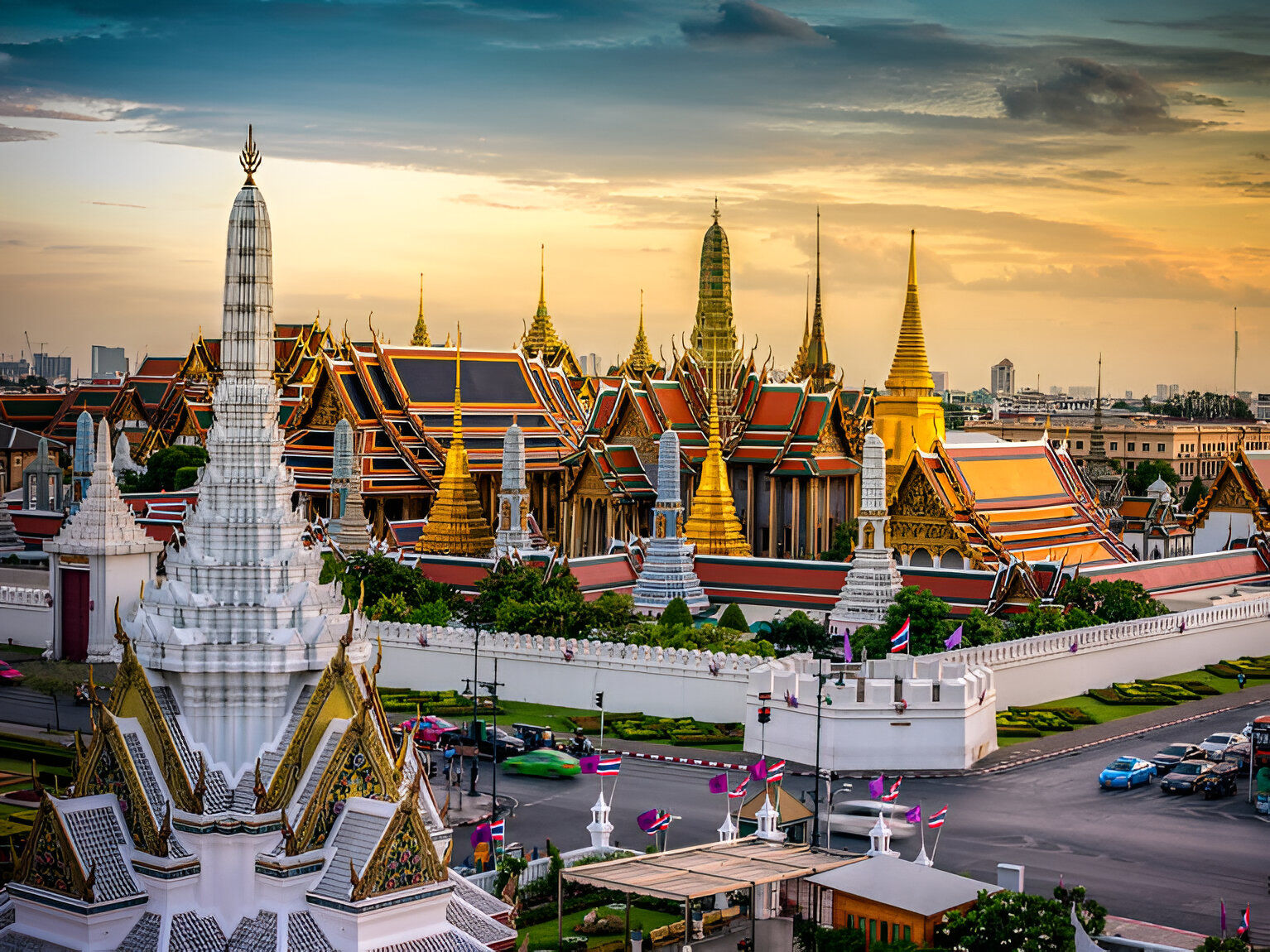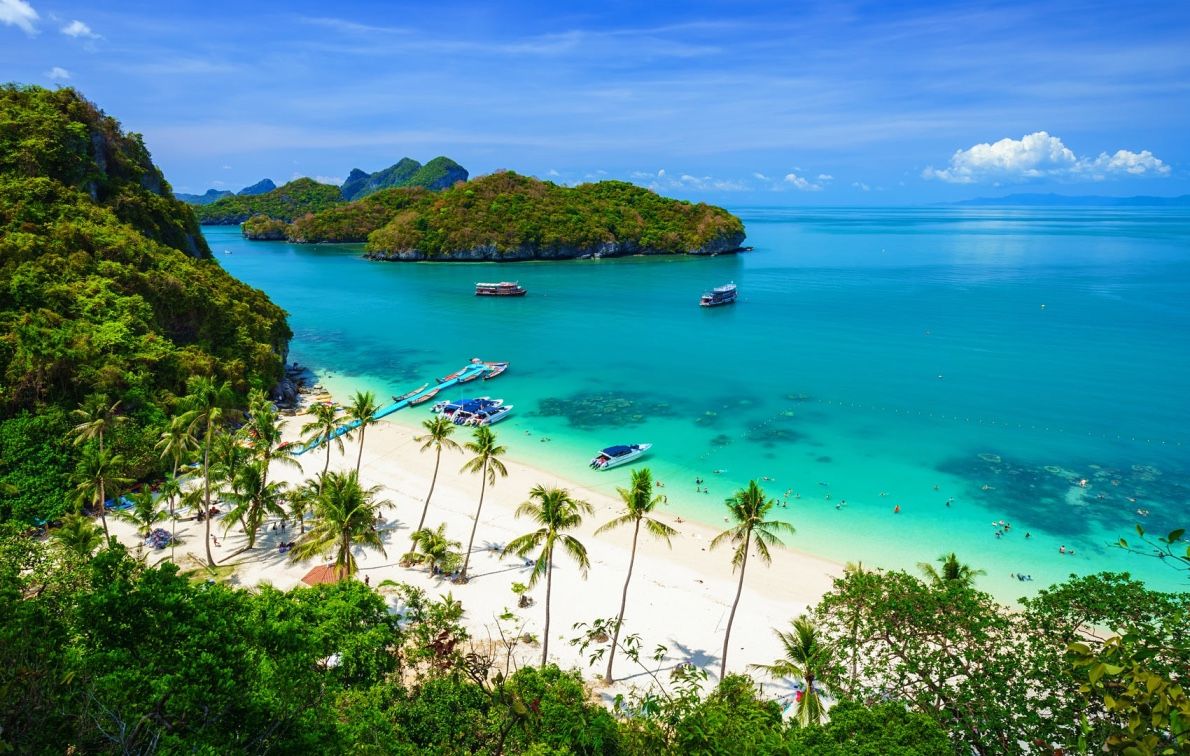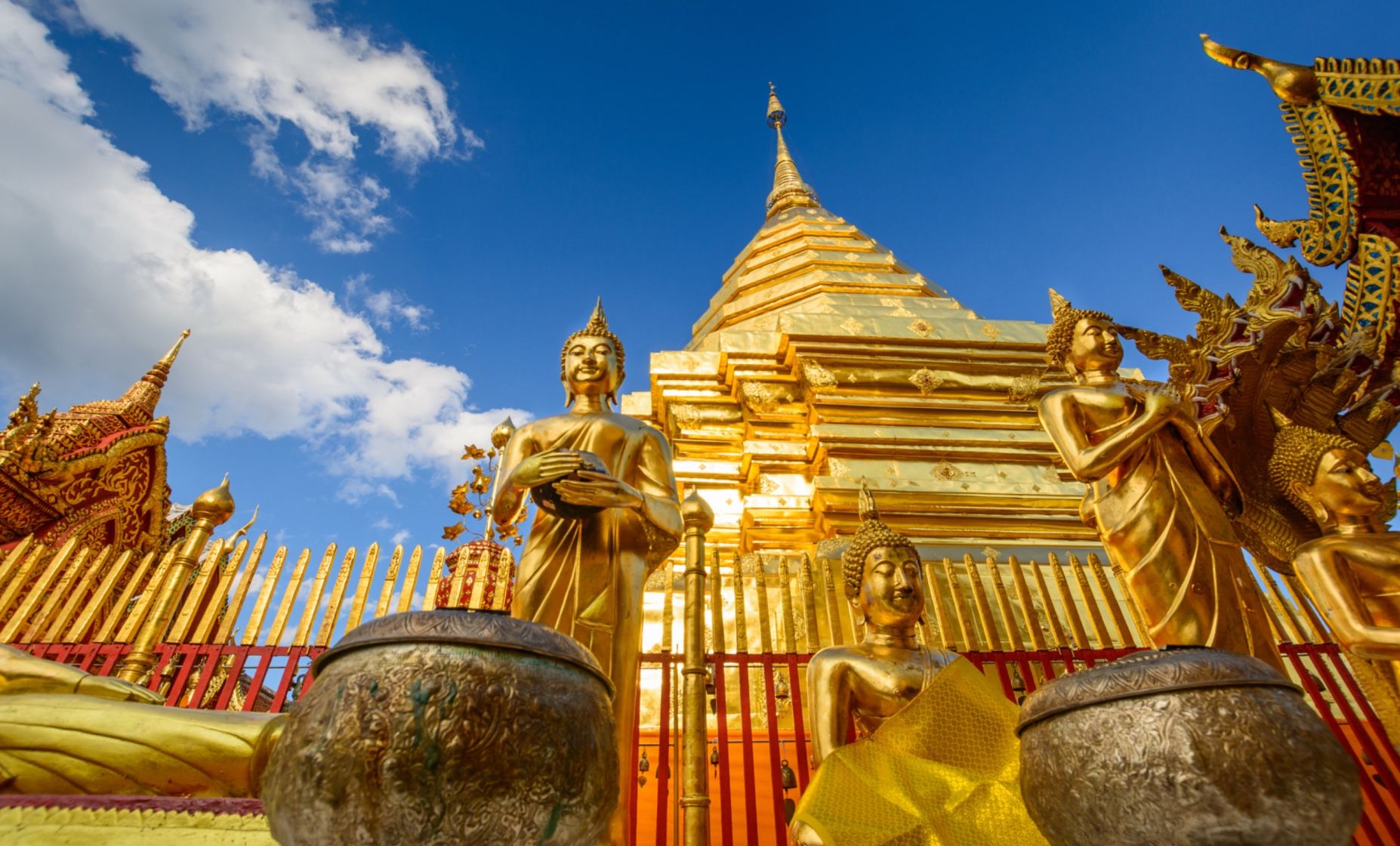How to plan your first visit to Thailand
Thailand stands out as one of the world’s top travel destinations, and for good reason. It offers an incredible range of unique experiences, affordable costs of traveling, and the cuisine that keeps visitors coming back for more.
For decades, this amazing Southeast Asian destination has been a first stop on the travel itinerary of pretty much everyone including backpackers. With so many fun things to do and places to explore, many travelers find themselves returning again and again. If you’re planning your first trip to Thailand, it’s worth taking some time to understand what to expect before you arrive in 2025.

To make the most of your visit, don’t try to pack too much into a single trip. Whether you’re heading to Thailand’s dazzling beaches, crystal-clear coral reefs, wildlife-rich national parks, or bustling Bangkok, take your time to experience each place, a rushed itinerary will only leave you disappointed.
At the same time, Thailand is best recommeded for first-timers and not that difficult to travel around, it’s extremely safe and locals are very welcoming. Before you pack your back, let’s address the key questions every first-time visitor to Thailand has in mind.
When should I go to Thailand?
Locals will tell you that the ideal time to go to Thailand is during the “winter” months from November to February, when the weather stays dry and the temperatures is just perfect. However, Thailand’s warm climate all year round ensures there’s never a bad time to plan your trip. Check when is the best time to visit Thailand
In the northern part’s winter, post-monsoon winds reduce humidity and bring slightly cooler temperatures, keeping daytime highs under 30°C (86°F). While choosing the cooler months for a tropical getaway might seem unusual, it makes exploring the steamy climate far more enjoyable.
Winter aligns with the Christmas and New Year holidays, drawing both Thai travelers and foreign tourists to the beaches, so, securing accommodation and transport in advance is essential. On the bright side, it’s also the prime season for scuba diving and snorkeling adventures.
Thailand’s “summer,” from March to June, brings mostly dry weather, especially in Chiang Mai and northern regions. However, the heat can get intense, often soaring to 38°C (97°F) and paired with high humidity. During this season, sticking to the coast, splurging on a hotel with a pool, or cooling off at local swimming spots can make your trip much more enjoyable.
By April, temperatures often soar to 40°C (104°F), and most Thais limit outdoor activities to avoid the intense heat. Tourism slows down, and prices drop, except during Songkran (Thailand’s intense three-day New Year celebration in mid- to late-April, famous for its nationwide water fights).

Thailand For First Timers: How long should I go?
Visiting Thailand for the first time can feel a bit too much, especially when many travelers try to cram every possible experience into their itinerary. This often leaves little time to truly relax and enjoy the trip.
The best advice for first-timers is to avoid overloading your schedule. Give yourself enough time—seven to ten days is ideal. With less time, stick to a single part like Bangkok, Krabi, Chiang Mai, or Phuket, and focus on experiencing the local culture and cuisine.
Think about what you want to get out of your trip and plan it based on that. If lounging on the beach is what you prefer, head to southern part like Phuket, Krabi, or nearby islands. For cultural experiences, explore the historic cities in central and northern Thailand & spending more time in Bangkok or Chiang Mai. Nature lovers should prioritize hiking and wildlife adventures in the far north or plan a few days in national parks like Khao Sok and Khao Yai.
Your mode of transportation also affects your time. Domestic flights make it easier to travel between both the north and south. Traveling by bus or train takes more time but can save money, and overnight options help you maximize your sightseeing while cutting down on accommodation cost.

Do I need a visa to visit Thailand?
Tourists from so many countries can enter Thailand without needing to apply for a visa in advance. Most visitors receive a 60-day entry stamp on arrival, which works well for typical holidays. Those looking to stay longer often cross land borders into neighboring countries like Malaysia, Cambodia, or Laos before returning to Thailand to get a new entry stamp.
How easy tis to get around in Thailand?
Traveling around Thailand is straightforward, with frequent public transport options and a reliable network of tourist transfers via air-conditioned minivans. For planning trips beyond Bangkok, there are frequent buses.
While Thailand’s railway isn’t that popular, however, it remains a practical choice for long journeys south along the peninsula or north to Chiang Mai. Sleeper berths are affordable and comfortable.
Private coaches run day and night to nearly every destination and they are easy to book, in person at bus stations, online through third-party platforms, or via travel agents, guesthouses, or hotels, which typically charge only a small fee. Low-cost domestic flights also connect major cities daily, though they come with an environmental impact to consider.
Getting around towns and cities in Thailand is also very easy, with taxis, tuk-tuks, local buses, and songthaews (shared pick-up trucks) connecting urban centers to nearby rural areas. Reaching offshore islands is equally straightforward, with options that include flights, ferries, or chartered long-tail boats. For backpackers, the well-known tourist minivan network links popular destinations at a slightly higher cost than public buses.
In Bangkok, the efficient BTS Skytrain and MRT subway systems works super reliable ad effective. The Grab app has become a favorite among both locals and tourists for its convenience.
The best things to do in Thailand
Thailand divides into four main different part, each with distinct experiences. The South is home to the country’s most famous islands and beaches. In the North, you’ll find towering mountains and indigenous villages. The Northeast, near Laos, offers a blend of food, culture, and a chance to escape the crowds. Meanwhile, the Central Plains are home to Thailand’s largest cities, ancient ruins, and some of the country’s top nature reserves.
Each region with differences in food, language, traditions, and religion, yet they all share a common Thai essence. Here’s a quick overview of each region to help you choose where to start your journey.
Bangkok
Bangkok pulses as the heart of Thailand, serving as the seat of the Thai Royal Family and ranking among the world’s largest and busiest capitals. Famous for its ancient temples, world-class shopping center & bustling markets, and vibrant nightlife, this city demands a slower pace. Rushing through all the major attractions in just a few days can quickly lead to city burnout.
The best way to explore Bangkok is on foot. Walk around the Grand Palace and Wat Pho on historic Ratanakosin Island, check out the backpacker hotspot of Khao San Road, enjoy mall-hopping around Siam Square and Thanon Sukhumvit, and dive into the food stalls in Chinatown. If you’re in the city on the weekend, don’t miss the Chatuchak Weekend Market, the largest in Thailand.
Before you leave, hop on the Chao Phraya Express Boat for a sunset ride along the river. This affordable ferry offers a scenic view of landmarks like Wat Arun and the Grand Palace. Check out best day trips from Bangkok
The Central Thailand
Travel outside Bangkok and you’ll discover a vast world of rolling green hills and charming small towns, each home to some of Thailand’s most captivating cultural treasures. The ancient ruins of Ayutthaya, just 90 minutes by train from Krung Thep Aphiwat Central Terminal in Bangkok, offer the perfect day trip from the bustling city.
Chiang Mai
Northeast Thailand
Known locally as Isan, this region remains Thailand’s least-visited area. While vast rice paddies drive the local economy, adventurous travelers will find plenty to explore, including some of the country’s most flavorful cuisine.
The Southern Islands
Explore Thailand with motorbike
Northern Thailand offers some of the best and scenic roads in the region. Rent a proper motorbike and tour the area and if you have more time in your hand, do the Thailand top to toe.
Traveling by motorbike lets you stop almost anywhere, change your plan and fully immerse yourself in the countryside, discovering things you might miss when traveling by bus. The roads are generally well-maintained, though you’ll need to watch out for fast-moving traffic and drivers who ignore the rules.
In northern Thailand, popular routes include the Mae Hong Son Loop near Chiang Mai, which takes you through tribal villages, scenic viewpoints, gardens, and waterfalls. Another exciting ride is the trip from Chiang Mai to Doi Inthanon, Thailand’s highest peak at 2,565 meters. The road to the summit is very scenic.
How much money do I need for Thailand?
Costs of traveling in Thailand can vary widely. Public transport is surprisingly affordable, but a cup of coffee or a beer might cost as much as a full street food meal. Beach resorts can range from budget-friendly to exorbitantly priced.
It’s clear that Thailand is no longer the bargain destination as it once was. While it’s still possible to travel on a budget, the cheap rooms that earlier generations enjoyed are becoming harder to find. For tight budgets, backpacker hostels are plentiful, though the quality and prices can vary from one city to another.
To experience the authentic side of Thailand without overspending, seek out local home-stays that offer great food and a genuine local stay. Another budget-friendly option is to dive into the local street food scene, where you can enjoy fresh, flavorful meals at low prices.
Average costs in Thailand
- Hostel room: 350–700B (US$11–20)
- Basic hotel room: 700–1700B (US$20–50)
- Luxury beach villa: 3500–35,000B (US$100–1000)
- Bus travel & train tickets: from 220B (US$7)
- Street food noodles: 70B (US$2)
- Thai restaurant meal for two: from 1400B (US$40)
- Local Thai beer: around 130B (US$4)
- Coffee: from 140B (US$4.50)
- Petrol (per liter): 45B (US$1.40)
Is Thailand safe for tourists?
Thailand is with no doubt, one of the safest countries in Southeast Asia for travelers, although, like anywhere, petty crime does occur. The country’s open and friendly culture ensures locals are often ready to assist if something goes wrong.
Road safety can pose a concern, especially if you’re traveling by motorcycle. Due to an ongoing insurgency in the south, many travelers avoid the provinces of Yala, Pattani, and Narathiwat, where political violence can occur.
Is Thai street food safe to eat?
Most street food in Thailand is freshly cooked in-front of you and mostly on order, making it generally safe to eat. However, pre-cooked dishes that have been sitting out for a while carry a higher risk, so trust your instincts when deciding if something seems safe.
While food poisoning is rare, mild stomach issues can occur due to undercooked meat, poultry, or seafood, as well as less hygienic preparation. First-time visitors might also experience minor digestive discomfort while adapting to local bacteria. To reduce risks, choose street vendors with steady crowds of local customers, as their reputation depends on serving a better quality food.
What should I know as a tourist when travelling to Thailand?
Thailand boasts a rich cultural identity, and Thai people are usually very tolerant to foreign tourists who might unintentionally commit social blunders. That said, it’s crucial to steer clear of actions that could be seen as disrespectful to Buddhism or the monarchy, as both hold immense significance in Thai culture and insulting either can lead to legal consequences.
Always respect images of the Buddha and the royal family. Avoid touching someone’s head, pointing with your feet, stepping over others, or resting your feet on chairs. These actions are frowned upon because the head is regarded as sacred, while feet are seen as impure. Additionally, public nudity, men walking around shirtless away from beaches or pools, loud behavior, and excessive displays of affection in public are best avoided to align with cultural norms.
Is cannabis legal in Thailand?
Stay informed about current regulations before participating in any cannabis-related activities. Thailand enforces strict penalties for all other drugs, including lengthy prison terms for possession and the death penalty for smuggling.
What to take
If visiting temples in Thailand, wear long pants or a long skirt, and make sure your top covers your shoulders. A sarong tied around your waist works perfectly if needed. The Thai sun is intense, so pack a proper sunscreen.




